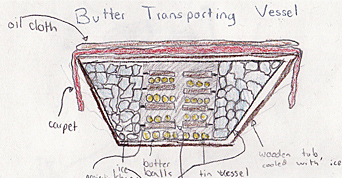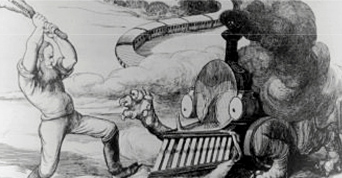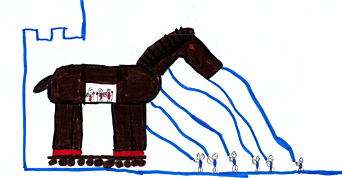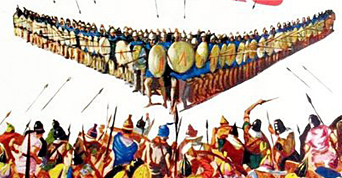All Investigations
Overview
This website features the investigation Slavery and Reconstruction (scroll down to learn more). Resources for many other investigations are available through our workshops.
Our investigations are designed to support critical exploration in the classroom. Each investigation originates in collaboration with a teacher and is centered on a topic many are required to teach. We assist collaborating teachers in their classrooms, working directly with students, so that the emerging curricula are informed by students’ interactions with the materials.
Slavery and Reconstruction includes nine subtopics. Each subtopic can fill one or more class sessions. You can browse through all nine as they appear, or you can consider teaching a smaller number or approaching them in a different order. On each subtopic page, in addition to a selection of primary sources, you will find detailed Questions and Activities, Student Responses, Teacher Narrative, and Additional Resources sections.
We hope you enjoy browsing Slavery and Reconstruction, and will consider attending a workshop to learn more about all our resources.
Teaching and Learning Through Critical Exploration
“First, we aim to put the learners in direct contact with the subject matter … a poem, or historical documents, or an arithmetic problem, or some writing that needs punctuating. Second … we find that when we are interested in the learners’ thoughts, the learners take a deepening interest in their own thoughts, too. We find that we focus on the learners’ thoughts rather than on our own, as the engine for what generates the intellectual life of the classroom. In part this is because the learners think better that way; and in part because it is by paying attention to what they are thinking and doing that we as teachers can see how next to call on our knowledge of the subject matter—what resources to provide, what next questions to ask. These two aspects of how we use our knowledge make for a powerful way to help people learn: depend on carefully selected aspects of the subject matter, and listen carefully to the learners’ ideas about them.”
Eleanor Duckworth, “Helping Students Get to Where Ideas Can Find Them,” The New Educator 5 : 3 (2009), pp. 185-188.
For practical suggestions for listening to students’ ideas, click View More.
Catch the students’ interest. (The primary sources for each investigation are here because they’ve helped capture students’ attention.)
Try to convey that you think they’ll enjoy exploring this image (or text, or map, etc.), and that what they are doing and saying sheds new light for you on the object. It always does.
Try to keep them thinking about it, even when they may think they have done all they can. And try to find out what they are thinking about the image, and to follow their thinking as it changes. For example:
Ask for observations:
- Start with a question that allows for a very small answer, where everyone has something to say — for example, “What do you notice?”
- Ask them to point to the image and show everyone what they are talking about.
- Ask what else they notice.
- Ask them to say more about an observation they’ve made.
Ask for clarification:
- Ask them to refer back to the image itself to back up whatever they have to say about it.
- Ask them to clarify something, or to explain what makes them say what they do.
- Make a hunch about what is behind what they say, and check the hunch with them.
Ask about conflicting or contrasting ideas:
- Draw attention to some seeming inconsistency in what they have said.
- Ask what about the image puzzles them.
- Ask how what they have said fits with another part of the image, or with something they said earlier, or with something someone else has said.
- Ask them to think about other students’ ideas, and to refer to the image to explain why they agree or disagree.
In addition, you’ll find more specific questions in the Questions and Activities section for every subtopic of every investigation.
Industrial Revolution
History / Social Studies


Industrial Revolution
This investigation was developed in a fifth- and sixth-grade classroom. Teacher resources are available through our workshops.
Slavery & Reconstruction
History / Social Studies


Slavery & Reconstruction
Explore Reconstruction, as well as its preludes and aftermath, through paintings, diaries and letters, editorial cartoons, maps, photographs, military and government documents, and handwritten labor contracts signed by ex-slaves.
These materials challenge students to…
- compare and contrast the experiences of blacks and whites before and after the Civil War
- trace the inconsistent pace and directions of change
- question their own assumptions about the obstacles and opportunities freedmen encountered and created
- build rich context for the 13th, 14th, and 15th constitutional amendments
- confront both the hope and promise of Reconstruction and its complicated reality and legacy.
Greek & Persian Wars
History / Social Studies


Greek & Persian Wars
This investigation was developed in seventh-grade classrooms. Teacher resources are available through our workshops.